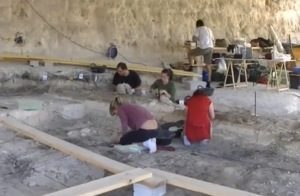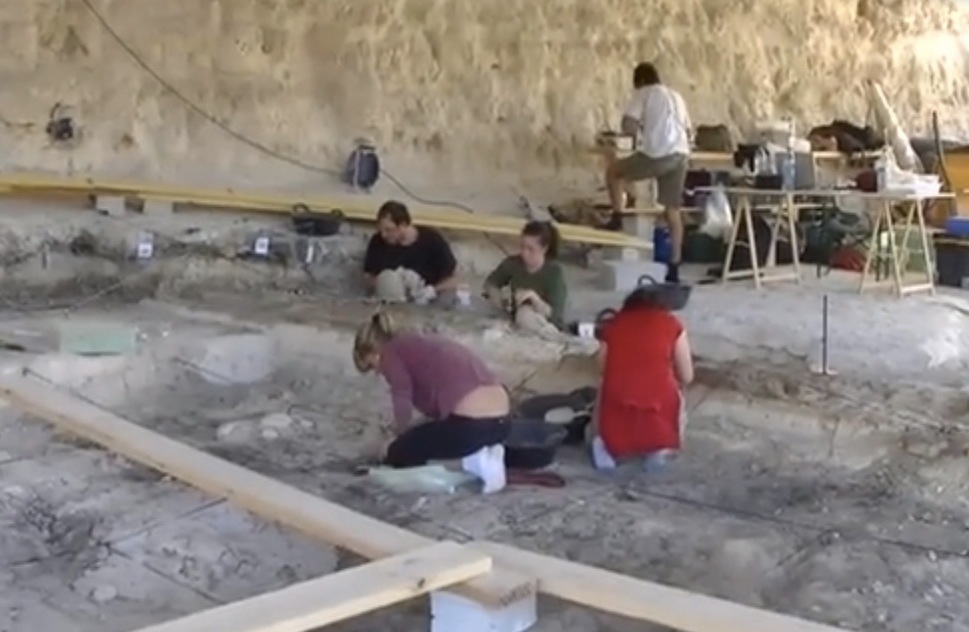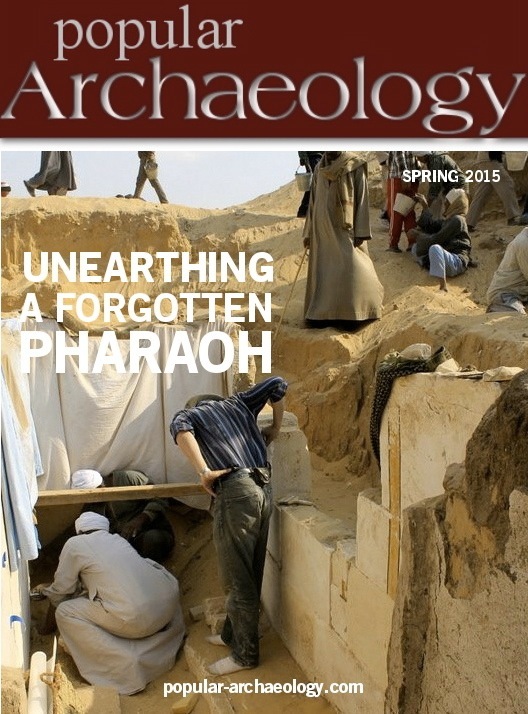
First excavated in 1993, the site of Barranco León in the Guadix-Baza Basin of southeastern Spain, just 80 km west of the Mediterranean shoreline, has yielded simple Oldowan-type stone tools within a context dated as far back as 1.4 million years ago. It documents the earliest known hominin (early human ancestral) presence in Western Europe, evidenced by the discovery of one tooth and thousands of ‘Mode 1’ (Oldowan-type) stone tools associated with fossil fauna, particularly large mammalian herbivores. The examined evidence shows that at least some of the herbivores were scavenged as carcasses by hominins as food sources after the initial carnivore predators were finished with them. The discoveries there paint an emerging new picture of one of the first dispersals of early human ancestors into a non-African landscape.
Questions surrounding the climatic and physical environment of this time period in Western Europe, however, have been much debated, including the potential role environmental factors played in influencing or formulating the patterns and timing of hominin dispersal outside of Africa. In a paper published online in the Journal of Human Evolution, Jordi Agustí and colleagues argue that changing climate conditions and its impact on available resources played a salient role in the timing and geographic dispersal of Early Pleistocene hominins in present-day Europe, particularly the region of present-day southeastern Spain.
“The early Pleistocene in the Guadix-Baza Basin is characterized by a sharp climatic deterioration [meaning colder and drier], which possibly impeded the settlement of this region by the early hominin population from the southern Caucasus,” write the authors in the report abstract. Lack of evidence for a hominin presence during the colder, drier period supported this. But “shortly afterwards,” the authors continue, “when the climatic conditions were again favorable, a hominin presence is suddenly evidenced.”* According to the researchers’ microvertebrate analysis of deposits at Barranco León, which was located near a paleolake (Paleolake ‘Baza’, an ancient lake that no longer exists) they found that the mean annual temperature at the time of the deposition within which the subject stone tool artifacts and faunal remains were found evidenced a time period characterized by warmer temperatures and greater humidity. Moreover, their analysis indicated that the hominins and other mammalian species that inhabited the area at the time exploited the water edges in a region that otherwise featured an open landscape.
__________________________________________
 Excavations in process at the site of Barranco León. From a YouTube screenshot Excavación en Barranco Leon en Orce
Excavations in process at the site of Barranco León. From a YouTube screenshot Excavación en Barranco Leon en Orce
__________________________________________
The findings have implications for human evolution and dispersal outside of Africa, especially in present-day Europe.
“The data reported here clearly support the idea that the early hominin occupation of Europe was strongly constrained by climatic and environmental conditions, rather than by physiography or cultural factors.”*
The study is published online in the Journal of Human Evolution.
__________________________________________
*Jordi Agustí, et al., Chronological and environmental context of the first hominin dispersal into Western Europe: The case of Barranco León (Guadix-Baza Basin, SE Spain), Journal of Human Evolution, doi:10.1016/j.jhevol.2015.02.014
____________________________________________________
 You can read our more in-depth articles about new discoveries and developments in archaeology and anthropology with a premium subscription to Popular Archaeology Magazine. Find out what Popular Archaeology Magazine is all about.
You can read our more in-depth articles about new discoveries and developments in archaeology and anthropology with a premium subscription to Popular Archaeology Magazine. Find out what Popular Archaeology Magazine is all about.
In addition, the latest Popular Archaeology ebook is now available.
______________________________________________
Travel and learn with Far Horizons.
____________________________________________
 Popular Archaeology’s annual Discovery Edition eBook is a selection of the best stories published in Popular Archaeology Magazine in past issues, with an emphasis on some of the most significant, groundbreaking, or fascinating discoveries in the fields of archaeology and paleoanthropology and related fields. At least some of the articles have been updated or revised specifically for the Discovery edition. We can confidently say that there is no other single issue of an archaeology-related magazine, paper print or online, that contains as much major feature article content as this one. The latest issue, volume 2, has just been released. Go to the Discovery edition page for more information.
Popular Archaeology’s annual Discovery Edition eBook is a selection of the best stories published in Popular Archaeology Magazine in past issues, with an emphasis on some of the most significant, groundbreaking, or fascinating discoveries in the fields of archaeology and paleoanthropology and related fields. At least some of the articles have been updated or revised specifically for the Discovery edition. We can confidently say that there is no other single issue of an archaeology-related magazine, paper print or online, that contains as much major feature article content as this one. The latest issue, volume 2, has just been released. Go to the Discovery edition page for more information.






